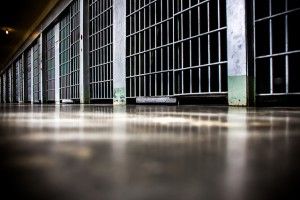Questionable practices at CA prisons criticized
After years spent under the glare of judicial scrutiny, California’s effort to clean up its prison system has run up against a fresh wave of challenges and controversy. Lawsuits, violence and Draconian measures have all increased costs while chipping away at support from the public and policymakers.
‘Potty watches’
Critics have no shortage of policies to go after. One stratagem under fire is the so-called “potty watch,” wherein prisoners are restrained, as ABC News reported, “for at least 72 hours or until they complete at least three closely watched bowel movements” — with guards investigating the feces for contraband. “Something is recovered from about four out of 10 inmates.”
The techniques used for restraining prisoners have become a particular focus of criticism. “Suspected smugglers are strip-searched, then placed in an isolation cell in which the toilet has been covered and the water turned off,” as ABC News noted. “Their clothing is taped shut at the waist and legs to prevent them from physically reaching body cavities, their hands are cuffed to a chain around their waist and their legs may be shackled. If they fight back, they can be strapped down by the arms and legs.”
A drug epidemic
But the drug problem in California’s prisons has become so severe that reform would have to strike at that challenge. Overdose rates have now tripled the national average for state prisons, according to the San Jose Mercury News. “The rate of drug overdose deaths in California prisons climbed between 2006 and 2013, the most recent year available, according to an annual death review for the federal court-appointed receiver who controls prison medical care.”
As the Associated Press reported earlier this summer, analysts have not been convinced that millions in spending and “the tough steps state officials took this year to stop illicit drugs from getting into prisons are having any effect, though they are prompting criticism from civil rights advocates.” Anecdotal evidence has cast a pall on screenings. Riverside resident Tania Gamboa, visiting her brother at Kern Valley state prison, faced a harrowing procedure, the AP observed:
She initially laughed when the ion machine tested positive for exposure to heroin, saying she doesn’t even drink alcohol. But she was crying after she was required to strip naked in front of two female correctional officers and squat to demonstrate that she was not concealing drugs.
Rising tensions
Drugs have become emblematic of California’s prison woes, which extend to the broader matter of simply maintaining order and safety for the incarcerated. A recent prison riot in Solano left guards making a grisly discovery of a murdered and disemboweled inmate’s body five hours after the victim first went missing.
And in an effort to save water, officials have turned off the taps on prisoners’ typical outdoor showers. A spokeswoman for the state Department of Corrections and Rehabilitation told the Los Angeles Times “all showers outside of those in the housing units have been shut down as part of the statewide mandate to reduce water use by 25% due to the drought.”
Without delay, inmates’ attorneys bundled the action into a complaint brought against the state. “The aqua austerity in prison yards is included in a lawsuit alleging inhumane conditions on California’s death row, alongside complaints about the prolonged use of solitary confinement, inadequate food and a lack of due process,” the Times confirmed.
Some progress
Despite the battery of difficulties, the Golden State has managed to move forward with some key prison reforms. This month, California regained control of its own prison health care system, following ten long years of federal receivership in the wake of shocking failures. Last decade, as the AP reported, “a federal judge found that conditions in the state’s prisons were so poor that an average of an inmate each week was dying of medical malpractice or neglect. A receiver was appointed to run the system in 2006. Since then, the state has spent $2 billion for new prison medical facilities, doubled its annual prison health care budget to nearly $1.7 billion and reduced its prison population by more than 40,000 inmates.”
Meanwhile, facing another lawsuit over its usage of solitary confinement, the state has dialed back its reliance on the practice. “Inmates may no longer be put in isolation for refusing a cell assignment, for example, one of several prison infractions for which solitary confinement punishment has been reduced or dropped. And those being disciplined with segregation can cut that punishment in half with good behavior,” according to the Times.
Related Articles
Battleground 2016: Top Legislative Races
Editor’s Note: This story was originally published on July 19. Republicans in the state Legislature are thought to have a
Assembly Republicans select Chad Mayes as next leader
Come January, Assembly Republicans will have a new leader. On Tuesday, the 28 Republican members of the lower house selected
The upsides of low turnout
This election, your vote counted double. “When it’s 50 % turnout, your voting power is doubled #math,” Paul Mitchell of Political





